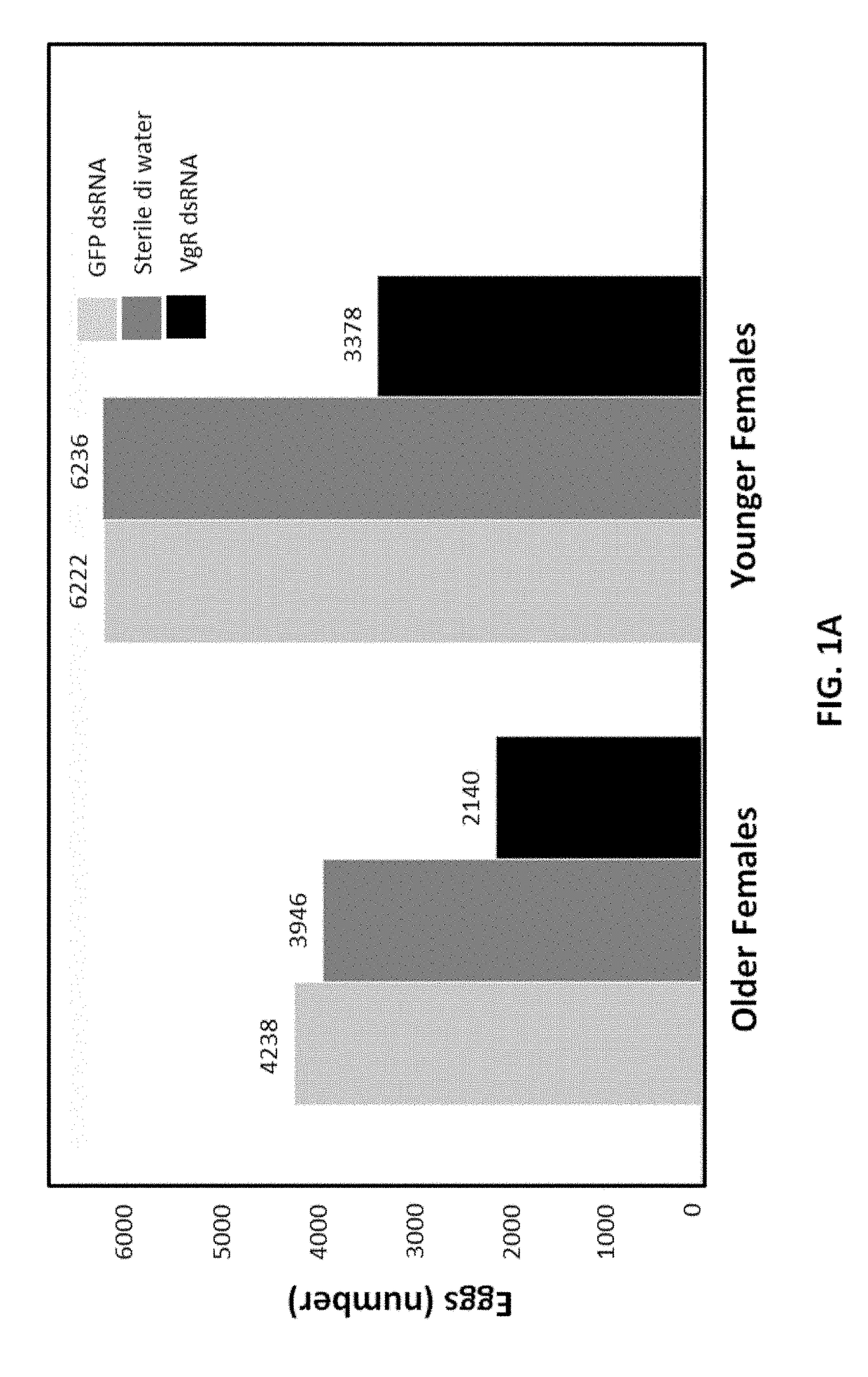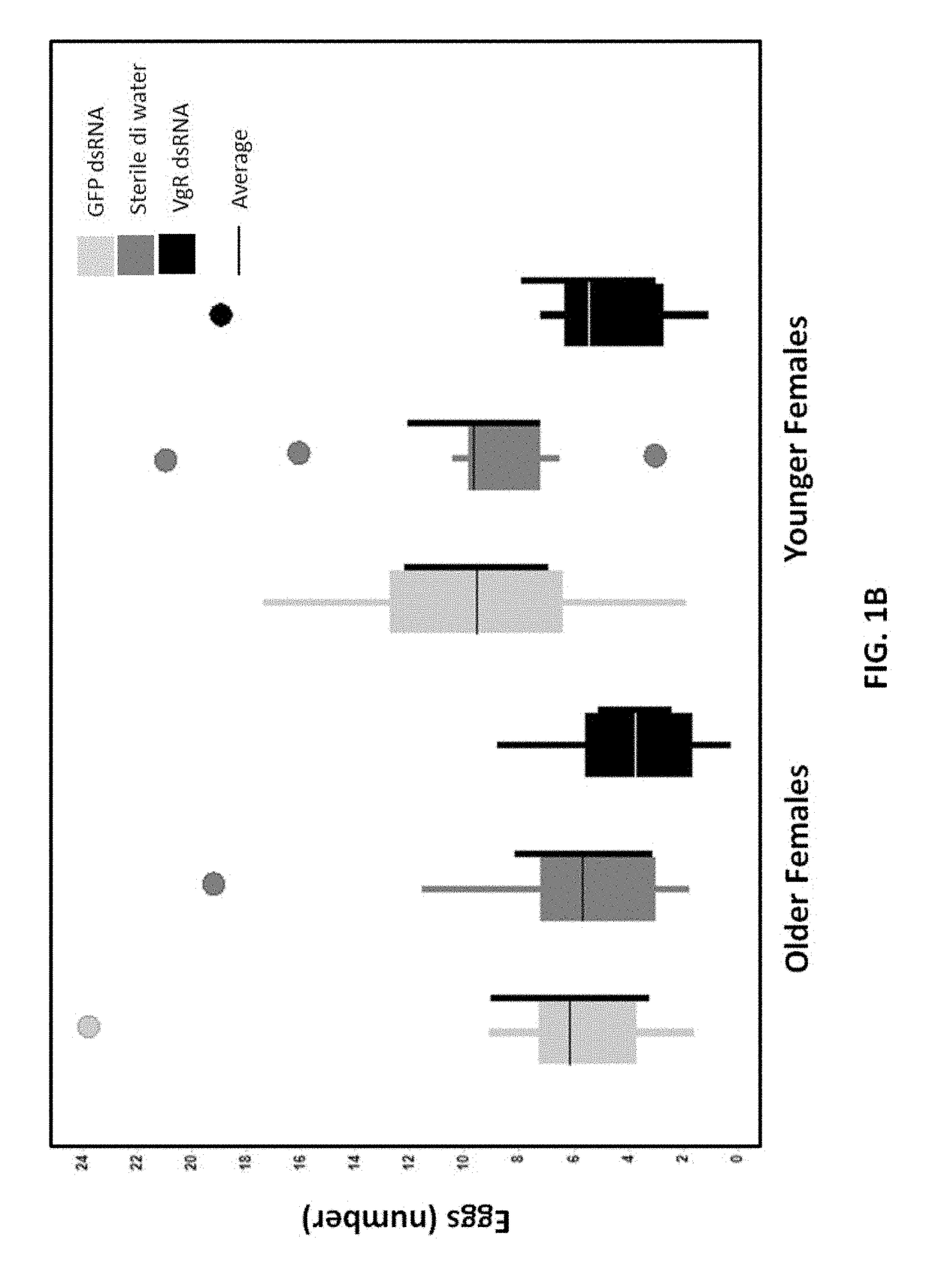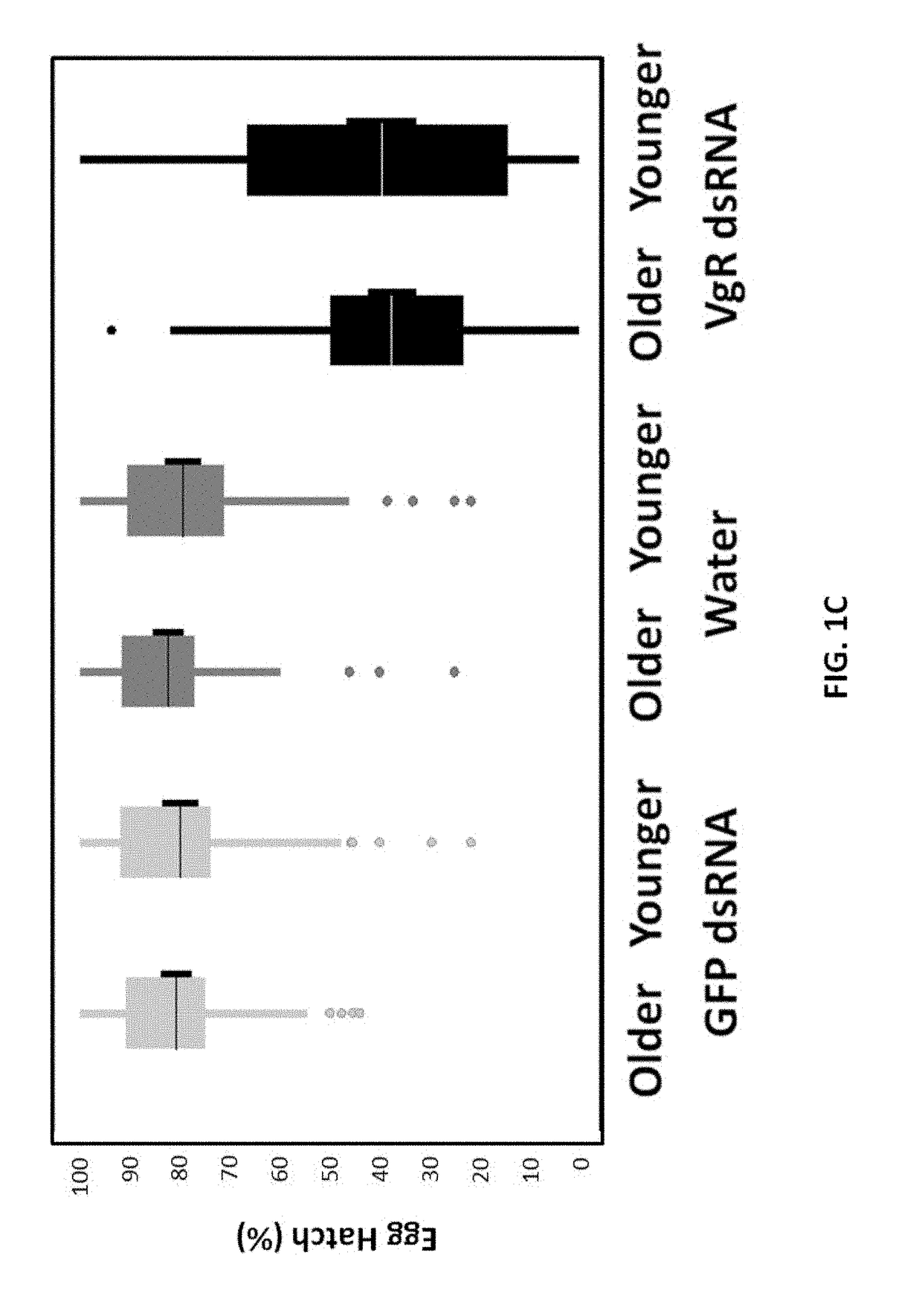Compositions and methods to control insect pests
a technology of insect pests and compounds, applied in the field of compounds, can solve the problems of destroying millions of acres of staple crops, $100 billion in crop damage, and plant insect pests are serious problems, and achieve the effects of limiting the damage to a plant or the spread of insect pests, reducing the expression of target sequences, and controlling the ability of pests to reprodu
- Summary
- Abstract
- Description
- Claims
- Application Information
AI Technical Summary
Benefits of technology
Problems solved by technology
Method used
Image
Examples
example 1
cid Sequences
[0254]Nucleic acid sequences disclosed herein comprise the following nucleic acid sequences. Certain sequences are exemplary and were shown to have insect sterilization activity against corn rootworms using the assay methods described in Examples 2, 3, and 6 as set forth below. Such sequences or their complements can be used in the methods as described herein above and below. Methods for making inhibitory sequences are known in the art. DNA constructs, vectors, transgenic cells, plants, seeds or products described herein may comprise one or more of the following nucleic acid or amino acid sequences, or a portion of one or more of the disclosed sequences. Non-limiting examples of target polynucleotides are set forth below in Table 1, or variants and fragments thereof, and complements thereof, including, for example, SEQ ID NOS.: 1-53 or 107-254, and variants and fragments thereof, and complements thereof. The list of sequences referred to herein, SEQ ID NOS.: 1-53 and 10...
example 2
orn Rootworm (WCRW) Adult Sterilization by VgR dsRNA
[0255]Artificial diet for WCRW adults was prepared using a modified protocol (Rangasamy M et al. (2012). Pest Manag. Sci. 68(4):587-91; and Nowatzki T M, et al. (2006) J Econ. Entomol. 99(3):927-30). The modified diet was designed for use in the diet incorporated bioassay described herein below (25 μl test sample:75 μl prepared diet) and was produced using standard 96-well micro-titer plates. WCRW adults consumed significant proportions of the diet within 24 hours, and control mortality remains <15% during the 2-3 week study period. For all the bioassays described herein, WCRW life stages (adults and larvae) were kept under standard conditions, for example, Jackson, J. J. (1986), pp 25-48. In Krysan J. L. and Miller T. A. (eds): Methods for the Study of pest Diabrotica. Springer-Verlag, New York. 260 pp, and Branson, T. F., et al. (1988), J. Econ. Entomal. 81(1): 410-414 (1988).
[0256]Beetles from the same batch were categorized in ...
example 3
ilization by Treatment of 3rd Instar Larvae with VgR dsRNA
[0262]The effect of treatment of larva on WCRW sterilization by VgR dsRNA (VgR dsRNA fragment 2) was assessed. The study was carried out using 3rd instar larvae that were harvested from corn mats and acclimatized on standard WCRW larval diet for 24 h. About 192 larvae were exposed to water and 75 ppm VgR dsRNA fragment 2 (SEQ ID NO: 4) for 1 day using the diet incorporation method described above (25 μl dsRNA and 75 μl artificial WCRW larval diet). Treated larvae were placed in pupation medium for 15 days. Emerged adults were collected, counted, and transferred to their respective holding cages and provided standard SCRW dry adult diet with a water source until the end of the study period (22-25 days). Beetle holding cages were kept at room temperature (usually from 22-25° C.) with no RH control. No intentional light / dark control but cages were getting roughly 16:8 Dark and light condition. Beetle holding cages were cleaned m...
PUM
| Property | Measurement | Unit |
|---|---|---|
| humidity | aaaaa | aaaaa |
| RH | aaaaa | aaaaa |
| temperature | aaaaa | aaaaa |
Abstract
Description
Claims
Application Information
 Login to View More
Login to View More - R&D
- Intellectual Property
- Life Sciences
- Materials
- Tech Scout
- Unparalleled Data Quality
- Higher Quality Content
- 60% Fewer Hallucinations
Browse by: Latest US Patents, China's latest patents, Technical Efficacy Thesaurus, Application Domain, Technology Topic, Popular Technical Reports.
© 2025 PatSnap. All rights reserved.Legal|Privacy policy|Modern Slavery Act Transparency Statement|Sitemap|About US| Contact US: help@patsnap.com



